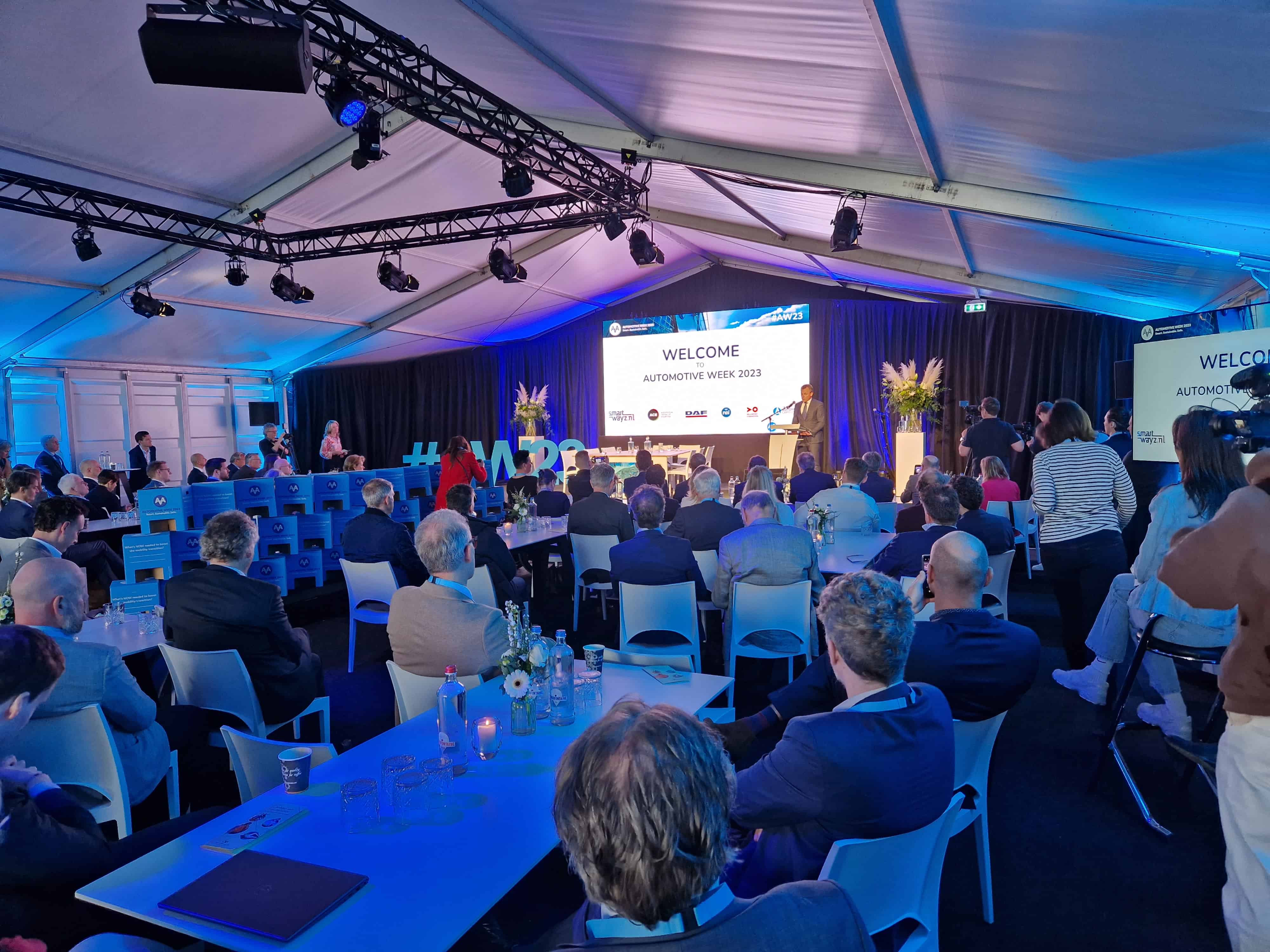
The Netherlands doesn’t really manufacture passenger cars. The only manufacturer here is Nedcar, which makes cars on behalf of BMW. Yet our country is the world champion in the automotive field, particularly in terms of e-mobility. Not for nothing was the Netherlands number one on the ‘Autonomous Vehicles Readiness Index‘ (AVRI) back in 2019. This is a ranking put together by KPMG to measure a country’s level of preparedness for autonomous vehicles (the Netherlands ranked second behind Singapore in 2020). The Automotive Disruption Radar from the German consulting firm Roland Berger ranked the Netherlands first in its last two editions.
The world’s most economical car
The hub of the Dutch automotive sector is, as is widely known, Brainport, as in the south east of the province of Brabant. Two companies that are disruptive, as in disrupting the status quo, are NXP and Lightyear. Maurice Geraets (Executive Director of NXP) and Tom Selten (Business Development Lead at Lightyear) joined presenter Bart Brouwers around the discussion table during the DTW talk on the future of mobility. Beforehand Geraets, had jokingly asked Selten when he could pick up his Lightyear solar car. Perhaps a little surprising, his reply was: “this very year.” That would signify a milestone. Within five years, this would take the world’s most fuel-efficient car from the design table to the road.
The story of Lightyear is not alien to readers of Innovation Origins. The company sprang into life from Eindhoven University of Technology (TU/e) in 2016 following the successful participation of student teams in two World Solar Challenges. Contacts between NXP and Lightyear date back to the very beginning. The manufacturer of high-performance semiconductor electronics foresees the future in Lightyear, and this start-up’s need for new, ‘disruptive’ technology.
Lightyear is not just another car equipped with solar panels. But instead it is a vehicle designed from scratch with the primary goal of dramatically reducing the car’s own energy consumption, without compromising on design. The “pike-like” look (similar to a Citroën DS) of the car is beautiful. The idea behind it is simple: The less power the car uses, the further it can go as well as be fitted with fewer batteries. “We’re focusing on the extreme reduction of power consumption of all elements of the car, down to the chip level,” Tom Selten explains.
The less power the car uses, the farther it can go as well as be fitted with fewer batteries.”
This is where NXP comes in. Maurice Geraets reveals that he drives a fully electric car, although not all chips are geared towards sustainability by a long shot. “The chip that controls the dashboard screen and the autopilot, among other things, consumes an extreme amount of energy. Even when it’s in sleep mode, it uses three kilowatt hours.” If you calculate that on an annual basis, its consumption is equal to the energy a family needs over six months. “We are moving toward chips that use as little power as possible. Lightyear’s demand for that kind of technology is way ahead of other manufacturers.”
Edge computing
This trend has already been set in motion – and by NXP itself. The Dutch multinational is a leader in, to name one thing, edge computing,. This is where information is processed at the edge of the network. This greatly reduces the response time and saves energy. In the automotive industry, edge computing is becoming more and more important, especially when the self-driving car makes its breakthrough. “We’re moving towards artificial intelligence on the edge in any event, while at the same time ensuring that cybersecurity is properly addressed.” In AI edge, AI algorithms are processed locally, either directly on the device itself or on the server located near the device. The algorithms use the data that is generated by the devices themselves.
Finally, the key question of why the Netherlands, such a small country with no real automobile manufacturing industry, is so strong in this branch. “The Netherlands is very good at collaboration across all players in the market,” Geraets asserts. Universities, knowledge institutes, governments, funding providers, small businesses, large enterprises alike, all regularly get together. Geraets says NXP also works with universities in China, for instance, albeit such collaborations are by and large bilateral.
Collaboration
The Dutch model of collaboration is now proving its worth. For instance, in charging infrastructure, in which the Netherlands is a frontrunner. The parties involved, including Lightyear, are working hard on new developments such as bi-directional and smart charging. “You already have the problem of charging station ‘hoggers’, even though the number of EVs in the overall vehicle fleet is negligible,” says Selten. “You can imagine what developments we will be facing if all mobility goes electric. We want to be ready for the future.”







